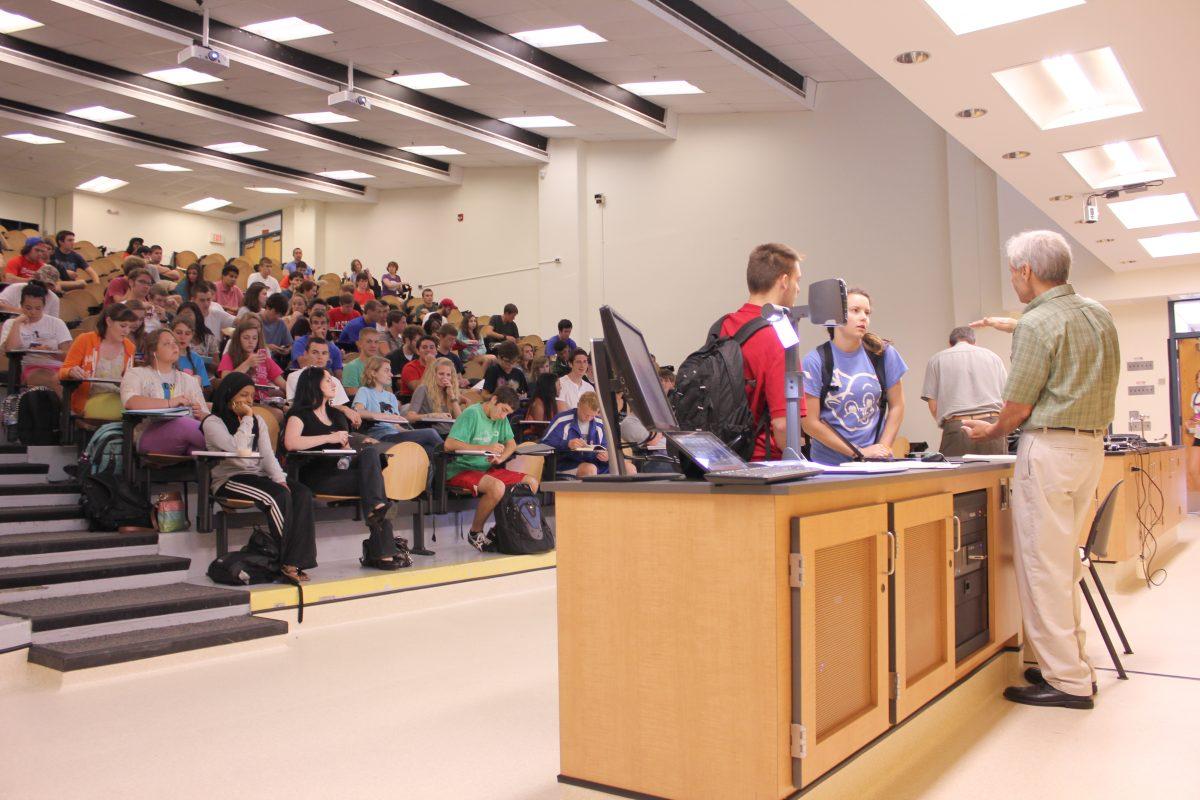Most N.C. State students have taken a class with more than 200 people, and many incoming freshman are told in high school that large lecture classes are to be expected and are a fact of college life. However, students and faculty members are questioning the effectiveness of large lecture classes.
Kelly Elder, a sophomore in political science at N.C. State, took calculus with about 240 students.
“You couldn’t ask questions, so I felt like if you had a problem it would be harder to understand [the material] unless you were in a smaller class. However, it was an easy class, so it wasn’t too big of a problem and there were TA’s,” Elder said.
Some professors, such as Christopher McKittrick, an accounting lecturer at N.C. State, also said they have a problem with students not asking questions or participating in discussion.
“It seems like I either have 250 students or 35 in classes I teach. It’s completely different to have a large class,” McKittrick said. “Getting people to ask questions in a large classroom is very difficult because people don’t want to be embarrassed. So that’s always a challenge to get people to not be afraid to ask questions.”
McKittrick said that in a large lecture an instructor also has to be entertaining to keep people payiang attention to the material being taught.
“Another difference [from smaller classes], is it’s just a lot of people to manage. There are just so many things going on with people’s lives—there are family issues, activities, work issues—issues that impact their academics and you are trying to help as much as you can and be consistent and fair,” McKittrick said.
Students like Elder are not alone.
“I took a Climate Change and Sustainability class. I think that class had about 400 to 500 people,” said Joel Ignizio, a sophomore in math education. “We did not have our questions answered as easily. At large universities, it’s harder to have one-on-one interaction with the professor.”
Ernest Carraway from the Department of Accounting also lectures a class with over 250 students.
“The biggest difference is that you can’t have as much personal contact with students as well as in smaller classes. You don’t have as much discussion or student involvement. This does cause some change in the lecture format,” Carraway said.
Limits on available resources are one reason why some classes continue to be so large.
“It’s a matter of balancing student demand and faculty resources. You have space issues with not having enough classrooms to handle the amount of students,” McKittrick said.
Many large classes have teaching assistants to help deal with the large volume of students. In addition, some professors try to create a more engaging environment for students in such classes.
“I try not to be different when teaching a large class because my goal is to get people talking and engaged. In some ways, you have to be a bit of an entertainer to keep people paying attention,” McKittrick said.








